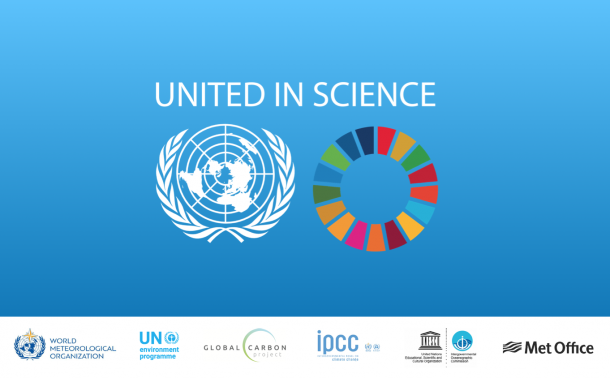A green pandemic recovery could cut up to 25 per cent off predicted 2030 greenhouse gas emissions and bring the world closer to meeting the 2°C goal of the Paris Agreement on Climate Change, the 2020 UNEP Emissions Gap Report finds.
The annual flagship report also finds that, despite a dip in 2020 carbon dioxide emissions caused by the COVID-19 pandemic, the world is still heading for a devastating temperature rise in excess of 3°C this century.
The Emissions Gap Report is coordinated by UNEP DTU Partnership, and Head of Strategy for Climate Planning and Policy, Anne Olhoff, along with several other UNEP DTU Partnership experts, are among the report’s main authors.
“To reach the targets in the Paris Agreement, and avoid the most severe impacts of climate change still to come, we need governments to invest heavily in climate action as part of their pandemic recovery,” she says of the report’s findings.
A crucial green recovery
Each year, the Emissions Gap Report assesses the gap between anticipated emissions and levels consistent with the Paris Agreement goals of limiting global warming this century to well below 2°C and pursuing 1.5°C.
By combining a green pandemic recovery with swift moves to include new net-zero commitments in updated Nationally Determined Contributions (NDCs) under the Paris Agreement, and following up with rapid, stronger action, the report also shows that governments could still attain the more-ambitious 1.5°C goal.
“The year 2020 is on course to be one of the warmest on record, while wildfires, storms and droughts continue to wreak havoc,” said Inger Andersen, UNEP’s Executive Director. “However, UNEP’s Emissions Gap report shows that a green pandemic recovery can take a huge slice out of greenhouse gas emissions and help slow climate change. I urge governments to back a green recovery in the next stage of COVID-19 fiscal interventions and raise significantly their climate ambitions in 2021.”
Lockdown with little significance on emissions
In 2019, total greenhouse gas emissions reached a new record of 59.1 gigatonnes of CO2 equivalent. This year’s Emissions Gap Report finds that emissions have grown 1.4 per cent per year since 2010 on average, with a more rapid increase of 2.6 per cent in 2019 due to a large increase in forest fires.
Despite a predicted reduction of 7 per cent in emission in 2020 due to the pandemic, this only translates to a 0.01°C reduction of global warming by 2050. Meanwhile, NDCs remain inadequate.
“The fact that a global pandemic and ensuing lockdowns in most of the world’s biggest emitting countries were not enough to significantly curb the rate of emissions and bring us closer to closing the gap, shows the urgent need for truly transformative green policies. The pandemic recovery offers a golden opportunity for this,” Anne Olhoff points out.
Goals still within reach
A green pandemic recovery can cut up to 25 per cent off the emissions we would expect to see in 2030, far outstripping emission reductions foreseen in current unconditional NDCs, which leave the world on track for a 3.2°C temperature rise.
Such a green recovery would put emissions within reach of keeping temperatures below a rise of 2°C, but would still be insufficient to achieve the 1.5°C goal.
A green pandemic recovery could include measures such as direct support for zero-emissions technologies and infrastructure, reducing fossil fuel subsidies, no new coal plants, and promoting nature-based solutions – including large-scale landscape restoration and reforestation.
So far, however, the report finds that action on a green fiscal recovery has been limited.
Reforming consumption behaviour
As it does each year, the report also focuses on the potential of selected sectors to deliver emissions cuts. In 2020, these are consumer behaviour and the shipping and aviation sectors.
The shipping and aviation sectors account for 5 per cent of global emissions. While improvements in technology and operations can increase fuel efficiency, projected increases in demand mean this will not result in decarbonisation and absolute reductions of CO2. Both sectors need to combine energy efficiency with a rapid transition away from fossil fuel, the report finds.
The report also finds that stronger climate action must include changes in consumption behaviour.
The wealthy bear the greatest responsibility: the emissions of the richest one per cent of the global population account for more than twice the combined share of the poorest 50 per cent. This group will need to reduce its footprint by a factor of 30 to stay in line with the Paris Agreement targets.
Possible actions to support and enable lower carbon consumption include replacing domestic short-haul flights with rail, incentives and infrastructure to enable cycling and car-sharing, improving the energy efficiency of housing and policies to reduce food waste.


